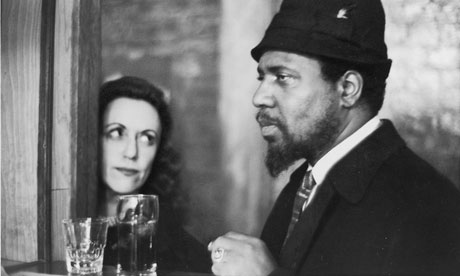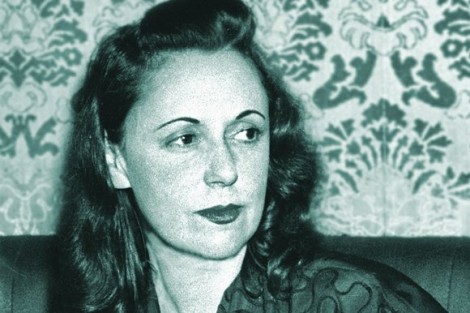The intriguing story of the eccentric Rothschild who turned her back on upper-class life to hang out in New York with the jazz stars of the day.
On April 21, 1959, Baroness Pannonica de Koenigs-warter was sentenced to three years in an American prison and fined $3,000. The 46-year-old mother of five had been arrested in Maryland the previous year for having $10 worth of marijuana and other narcotics in her pastel-blue Bentley.
The drugs belonged to her passenger Thelonius Monk, the jazz musician, yet Nica, as she was known, bravely took the rap for the pianist, whom she called “the eighth wonder of the world” and whom she had selflessly — and selfishly — dedicated her life to. Twenty years later, asked about the incident, she simply said: “It was such a bore, I can’t be bothered to talk about it.”
Source:http://www.thesundaytimes.co.uk
Kathleen Annie Pannonica de Koenigswarter (born Rothschild; 10 December 1913 – 30 November 1988) was a British-born jazz patroness and writer. She was a leading patron of bebop music. She was a scion of the prominent Rothschild international financial dynasty.

Thelonious Monk and Nica de Koenigswarter at the Five Spot jazz club, New York, 1964: ‘She’s in love with him: the way she gazes at him… but I don’t believe that sex was at the heart of it.’ Photograph: Ben Martin/Time & Life Pictures/Getty Image
The name “Pannonica” (nicknamed “Nica”) derives from Eastern Europe’s Pannonian plain. Her friend Thelonious Monk reported that she was named after a species of butterfly her father had discovered, although her great niece has found the source of the name is a rare kind of moth.
Thelonious Monk : “Pannonica”
“Hi, everybody! I’m very, glad, to be here, today. And I would like to play, um, a little tune I just composed not so long ago, entitled Pannonica. It was named after, this beautiful lady here. I think her father gave her that name after a butterfly, that he tried to catch. I don’t think he caught the butterfly. But anyway, here’s the number I composed named after her, Pannonica.”
Thelonious Monk
There are numerous compositions in her honour. Gigi Gryce’s “Nica’s Tempo”, Sonny Clark’s “Nica”, Horace Silver’s “Nica’s Dream”,Kenny Dorham’s “Tonica”, Kenny Drew’s “Blues for Nica”, Freddie Redd’s “Nica Steps Out”, Barry Harris’s “Inca”, Tommy Flanagan’s “Thelonica” and Thelonious Monk’s “Pannonica” were all named after her. The San Francisco art rock band Oxbow released a recording entitled “Pannonica” name checking de Koenigswarter (unrelated to the Thelonious Monk composition) with reissues of their 1991 album King of the Jews.
Kathleen Annie Pannonica Rothschild was born in December 1913, in London, the youngest daughter of Charles Rothschild and his wife, Hungarian baroness Rozsika Edle von Wertheimstein, daughter of Baron Alfred von Wertheimstein of Transylvania. She was born into a branch of the wealthiest family in the world at the time. Her paternal grandfather was Baron Nathan Rothschild. She grew up inWaddesdon Manor, among other family houses. The name “Pannonica” (nicknamed “Nica”) derives from Eastern Europe’s Pannonian plain. Her friend Thelonious Monkreported that she was named after a species of butterfly her father had discovered, although her great-niece has found that the source of the name is a rare kind of moth. She was a niece of Walter Rothschild, the 2nd Baron Rothschild, and her brother Victor Rothschild became the 3rd Baron Rothschild. (According to thepeerage.com, she was granted the rank of the daughter of a baron on 15 March 1938) Her elder sister Dame Miriam Rothschild was a distinguished scientist and zoologist.
In 1935 she married French diplomat Baron Jules de Koenigswarter, later a Free French hero. They lived together in a château in north-west France. She worked for Charles de Gaulle during World War II. The couple separated in 1951 and she moved to New York City, permanently renting a suite at the Hotel Stanhope on Fifth Avenue, and leaving behind five children. As a result of their separation, Koenigswarter was disinherited by her family, the Rothschilds. The couple eventually divorced in 1956. In 1958, she purchased a house with a Manhattan skyline view, originally built for film director Josef von Sternberg, at 63 Kingswood Road inWeehawken, NJ.
About JAZZ:
In New York, de Koenigswarter became a friend and patron of many prominent jazz musicians, hosting jam sessions in her hotel suite, and lending them her chauffeur and Rolls Royce when they needed a lift to performances. She is sometimes referred to as the “bebop baroness” or “jazz baroness” because of her patronage of Thelonious Monk and Charlie Parker among others. Following Parker’s death in her Stanhope rooms in 1955, de Koenigswarter was asked to leave by the hotel management; she re-located to the Bolivar Hotel at 230 Central Park West, a building commemorated in Thelonious Monk’s 1956 tune “Ba-lue Bolivar Ba-lues-are”.
“The Baroness. Nica, who was born in 1913, grew up at Tring Park (Tring is now a school; Waddesdon Manor, though administered by a trust under the chairmanship of Hannah’s father, Jacob, was bequeathed to the National Trust in 1957). There, she wiled away her young days in a starched white dress, sewing and playing the piano; her parents did not approve of education for girls and running and hiding were forbidden lest her frock be ruined. Life was monotonous and dull but, knowing nothing else, she did not think to kick against it. In 1934, she was duly presented at court and her marriage in 1935, to Baron Jules de Koenigswarter, a handsome French diplomat, was predictable, if not the soaring match her ambitious mother had dreamed of. If he was controlling, well, she was used to that.
In 1948, however, something happened. On her way to the airport after a visit to New York, Nica stopped to visit a friend, the jazz pianist Teddy Wilson, who played her a recording of “Round Midnight” by a then unknown jazz pianist, Thelonious Monk. Unable to believe her ears, she listened to it 20 times in a row and was bewitched. Having missed her plane, she never went home again. Abandoning her husband and five children, she moved into a suite at the Stanhope hotel and set about trying to meet the man who had made this extraordinary record. Naturally, it took a while to track the erratic Monk down. It wasn’t until 1954 that she finally laid eyes on him, having flown to Paris for the privilege. Did he live up to her dreams? Oh, yes. He was, she said, “the most beautiful man she had ever seen”. From that moment, there was no going back. For the next 28 years, Nica devoted her life to Thelonious Monk. In her eyes, he could do no wrong. He was a genius, pure and simple, and there was nothing she would not do – no money she would not spend, no place she would not go – to make his life easier.”
Book: The Baroness by Hannah Rothschild






Discussion
No comments yet.